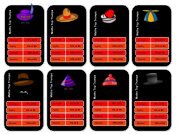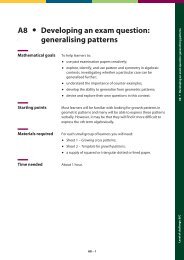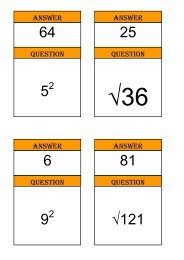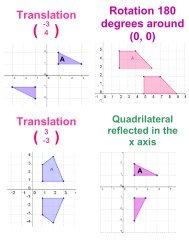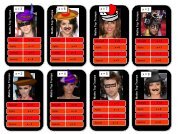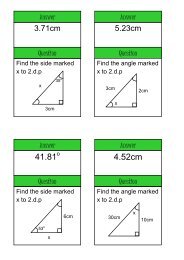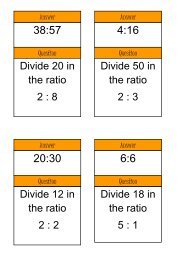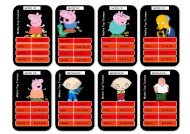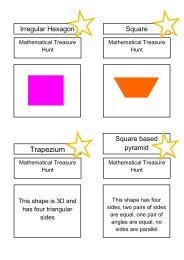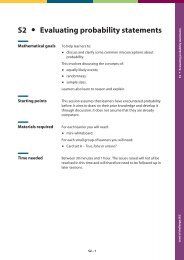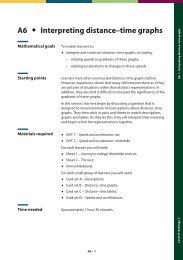Statistics 1 Revision Notes - Mr Barton Maths
Statistics 1 Revision Notes - Mr Barton Maths
Statistics 1 Revision Notes - Mr Barton Maths
You also want an ePaper? Increase the reach of your titles
YUMPU automatically turns print PDFs into web optimized ePapers that Google loves.
The interquartile range, I.Q.R., is Q 3 – Q 1 = 10 – 7 = 3.<br />
Grouped frequency tables, continuous and discrete data<br />
To find medians and quartiles<br />
1. Find k = (for Q 2), (for Q 1), (for Q 3).<br />
2. Do not round k up or change it in any way.<br />
3. Use linear interpolation to find median and quartiles – note that you must use the<br />
correct intervals for discrete data (start at the s). <br />
Grouped frequency tables, continuous data<br />
class boundaries frequency cumulative frequency<br />
0 ≤ x < 5 27 27<br />
5 to 10 36 63<br />
10 to 20 54 117<br />
20 to 30 49 166<br />
30 to 60 24 190<br />
60 to 100 12 202<br />
With continuous data, the end of one interval is the same as the start of the next – no gaps.<br />
To find Q 1 , n = 202<br />
⇒<br />
<br />
<br />
= 50 <br />
do not change it<br />
Q 1 – 5<br />
5<br />
class<br />
boundaries<br />
cumulative<br />
frequencies<br />
5 Q 1 10<br />
27 50⋅5 63<br />
36<br />
23⋅5<br />
From the diagram<br />
<br />
<br />
<br />
<br />
⇒ Q 1 = 5 + 5 × <br />
<br />
= 8⋅263888889 = 8⋅26 to 3 S.F.<br />
14/04/2013 <strong>Statistics</strong> 1 SDB 15



